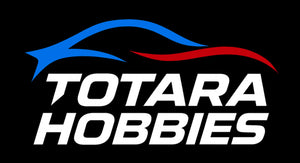
Gundam Models: The Art of Assembling and Displaying Iconic Mecha Creations
Gundam. It’s a name that’s well-known in the hobby world, with hundreds of different model designs and even more model kits to put together. These impressive mechs have captured the hearts and minds of hobbyists everywhere, starting in Japan and extending worldwide.
What Is Gunpla?
Gundam plastic models, often shortened to ‘Gunpla,’ are highly posable figure versions of the popular mech designs in Gundam manga, anime, movies, video games and more. Starting in Japan in 1979, this franchise quickly skyrocketed in popularity. Gundam features an incredible array of mech designs in different shapes, sizes and colours. From classic gigantic mechs to those that look more vehicular than humanoid, there’s something for everyone.
Gunpla, in particular, refers to the plastic models themselves. These are intricate models you can put together piece by piece, with most not requiring paint or glue. Most Gundam models feature a ‘snap together’ format, where parts fit together like puzzle pieces. Paint, stickers and finishes aren’t necessary, but many hardcore builders choose to enhance their figures with extra finishing touches.
Once the mechs are built, they can be proudly displayed for you to admire. Many mechs can stand independently, and plastic holders and arms can put figures in more dynamic and engaging poses. Additionally, model kits often come with additional accessories like weapons.
The building, displaying and admiring of Gunpla models has become an entire hobby in itself, with many builders focusing far more on the models rather than the shows or movies. You can enjoy the process of building your figures even if you aren’t familiar with the lore of the Gundam universe.
Getting Started With Gundam Models
Gunpla is an exciting hobby that ends with extraordinary mech figures for you to display and treasure. But if you’re new, you may be confused about where to start.
Choose An Appropriate Model. Luckily, Gundam models are graded to help separate the simpler mechs from the mind-blowingly complex figures. Choose a kit that suits your experience level:
-
Entry Grade. (EG). As the name implies, EG figures are great for beginners. They’re simple but still have amazing visuals.
-
High Grade (HG). If you’d like something a bit more challenging, then HG is for you. These are more complex than EG, but they’re still doable and have an astounding level of detail.
-
Real Grade (RG). Taking a step up from HG, RG models are much more detailed and have an incredible amount of articulation.
-
Master Grade (MG). These astounding Gunpla models often stand at around 18+ cm tall. Unlike easier options, MG models are built around an inner skeleton, making building them that much more interesting and rewarding.
-
Perfect Grade (PG). If you really want a challenge, then PG is the ultimate test for Gunpla enthusiasts. These marvellous 1/60 scale figures are worth every cent, with unbelievable detail and articulation.
-
Super Deformed (SD). SD models are ‘chibi’ mechs with enlarged heads, smaller bodies and big adorable eyes. SD models are relatively simple and affordable, and just like their larger, more realistic counterparts, they’re a thrill to collect.
Follow The Instructions. This tip is obvious - follow the instructions! Gundam figures come with many small parts, so going out of order or trying to go on instinct can quickly land you in hot water. Carefully follow the build manual and take extra care to select the right parts when taking pieces from their plastic runners.
Stay Organised. With so many pieces, tools and more, it’s easy to lose focus and drop parts. Stay as organised as possible and do things in order to prevent lost parts and frustrating mistakes. Many builders leave parts in their runners until it’s time to use them.
Use Tools. If you try to remove parts from their runners with nothing but your hands, then you’re going to have a bad time. Use appropriate tools like nippers, tweezers, hobby knives and sanders. Nippers and hobby knives let you cleanly remove plastic parts from their runners, tweezers give you precise handling accuracy and sanders can sand away bits of unwanted plastic runner that stay on the part.
Don’t Force Anything. Just like with a jigsaw puzzle, don’t try to force any pieces together. This can damage pieces and hurt your mech. Pieces should fit together well, just as they’re designed to. Stay gentle but firm when putting your figure together. If something feels wrong, then re-check your manual.
Add Finishing Touches. Many builders are content with their plastic models as they are, but if you want to take things up a notch, then you can add finishing touches:
-
Decals. Many kits come with decal stickers to add to your mech. Be very careful and go slow so that your stickers are aligned properly.
-
Panel Lining. Panel lining is the act of going over the lines of the model with markers to highlight details. Specialised panel markers are available for hardcore builders.
-
Sealing. Use a sealant to form a protective membrane over your model, keeping decals in place and adding a nice finish.
Display And Enjoy! The final step is to pose, display and enjoy your amazing new mech. Many keep their figures on their desks and shelves and occasionally reposition their mechs to keep things interesting.
Exploring The Gundam Universe With Gunpla Models
Head to our Gundam section at Totara Hobbies to pick out your newest addition to your mech collection. If you’d like some assistance, please feel free to call us on +64 21438727 or use our contact page.
Build your own army of impressive mechs with Totara Hobbies.

